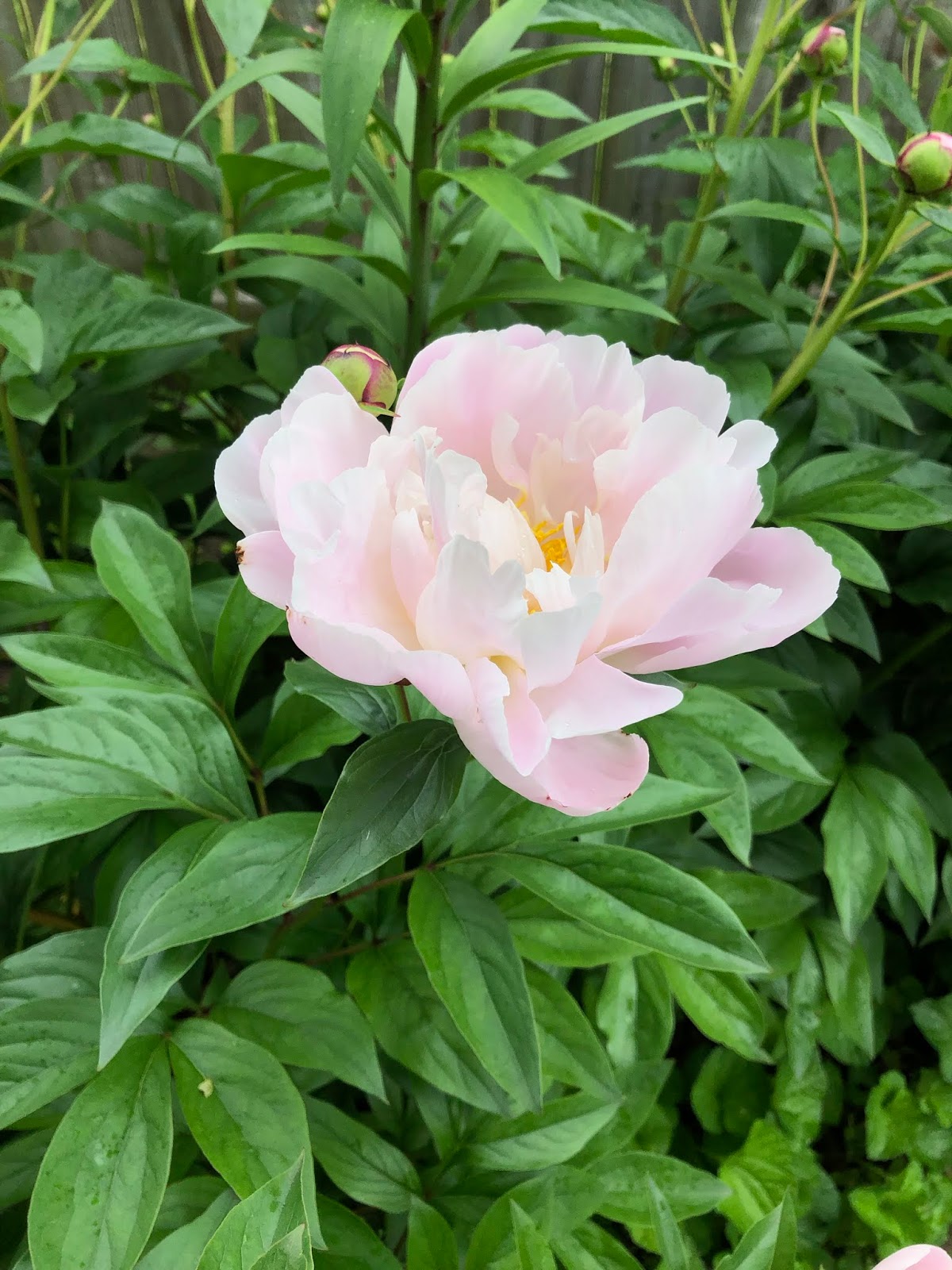
“No garden can really be too small to hold a peony. Had I but four square feet of ground at my disposal, I would plant a peony in the centre and proceed to worship.”
And thus we are introduced to another Lost Lady of Garden Writing, Alice Harding (Mrs. Edward Harding).
Alice, as I’m going to call her throughout this blog post, was rather elusive for me to easily find information about her life until I did a search for “Alice Harding Plant.” This eventually took me to an article about Alice on the Historic Iris Preservation Society Website.
They noted that at the time of her death in 1938, “two irises, two herbaceous peonies, one tree peony, two lilacs, and a rose had been named in her honor by some of the most respected hybridizers of the day.”
I found Alice on my own bookshelf via her second book on peonies, Peonies in the Little Garden (1923). Her first book was The Book of the Peony (1917). In 1993, Timber Press reprinted both books together in a book called The Peony. Good used copies are still available, as they say.
Alice gardened in Plainfield, NJ, on her estate called Burnley Farm. I cannot find her birth year but do see that she got married in 1900 and prior to that she was educated at home.
Her work with peonies and other plants took her overseas, probably on several occasions. She wrote about one such trip in her book, Peonies in the Little Garden. I’m going to copy it here to give you a taste for her character.
“In March of 1919 I had a wonderful opportunity to see the battle-fronts of Europe from Nancy to Ostend. A sadder, more appalling vision of destruction never was. Town after town was leveled to heaps of brick and dust; tree after tree was deliberately sawed off and left to rot. The grapevines were pulled up, the fruit trees girdled, the land itself so shattered and upheaved that the gardener’s first query was whether it could again bear crops before the lapse of many years.
We had left Amiens one Sunday morning, and passing Villers-Bretoneaux—where Australian troops and some American engineers had made the stand that save Amiens and the Western line—had go through Hamelet, Hamel, Bayonvillers, Harbonnieres, and Crepy Wood to Vauvillers. As the only woman in the party, I had been unanimously appointed in charge of the commissariat. It was noon when we reach Vauvillers. I chose a broken wall about fifty feet from the road as a good place on which to spread our luncheon. The car was stopped, the luncheon things were unpacked, and we picked our way over the mangled ground to the fragrment of wall. As I passed around the end I came upon two peony plants pushing through the earth. Tears brimmed. I could not control them. Here had been a home and a cherished garden. As I stood gazing at the little red spears just breaking through the ground, a voice, apparently from the sky, inquired whether Madame would like a chair. Looking along the wall I saw the head of an old peasant women thrust through a tiny opening. She smiled and withdrew, appearing a moment later with a chair. It was her only chair. She then brought forth her only cup and saucer, her only pitcher filled with milk, and offered us her hospitality!
Joined now by her venerable husband, we listened to their story. The hiding of their few treasures, the burial of their bit of linen, their flight to Paris, the description of the outrageous condition of the one room left for them to return to, made us burn with indignation. It was in her little garden that the peonies grew. The fruit trees and shrubs were gone, the neat garden walks were blasted into space, the many precious flowers were utterly destroyed. When she found that Madame, too, loved les belles pivoines, (the beautiful peonies) she urged me to take one of the only two roots she had left!
We went alway leaving the old couple laden with supplies, and I gathered from every man in our party a heavy toll of tobacco for a farewill gift of comfort. I hope she has again a little garden, with all the peonies that it will hold.”
That is a wonderul story, not only about the kindness of Alice, but also about the perserverance of peonies and those people returning to their homes after World War I.
Today, you can probably still find some of the peonies, irises, and other plants named for Alice, either as Alice Harding or Mrs. Edward Harding.
And as I write this, my peonies are in full bud and soon will be opening up. The one pictured above from last year is from a start I have from the peonies my dad grew along the side of our house. Elsewhere in the garden, my Itoh peony, ‘Bartzella’ finally has some flower buds on it after two years of withholding its bloom from me.
I’ll think of Alice Harding when I go out to see it in bloom. It’s true what she wrote, “No garden can really be too small to hold a peony. Had I but four square feet of ground at my disposal, I would plant a peony in the centre and proceed to worship.”
(Dee and I talk about Alice Harding in this episode of The Gardenangelists.)


Leave a Reply